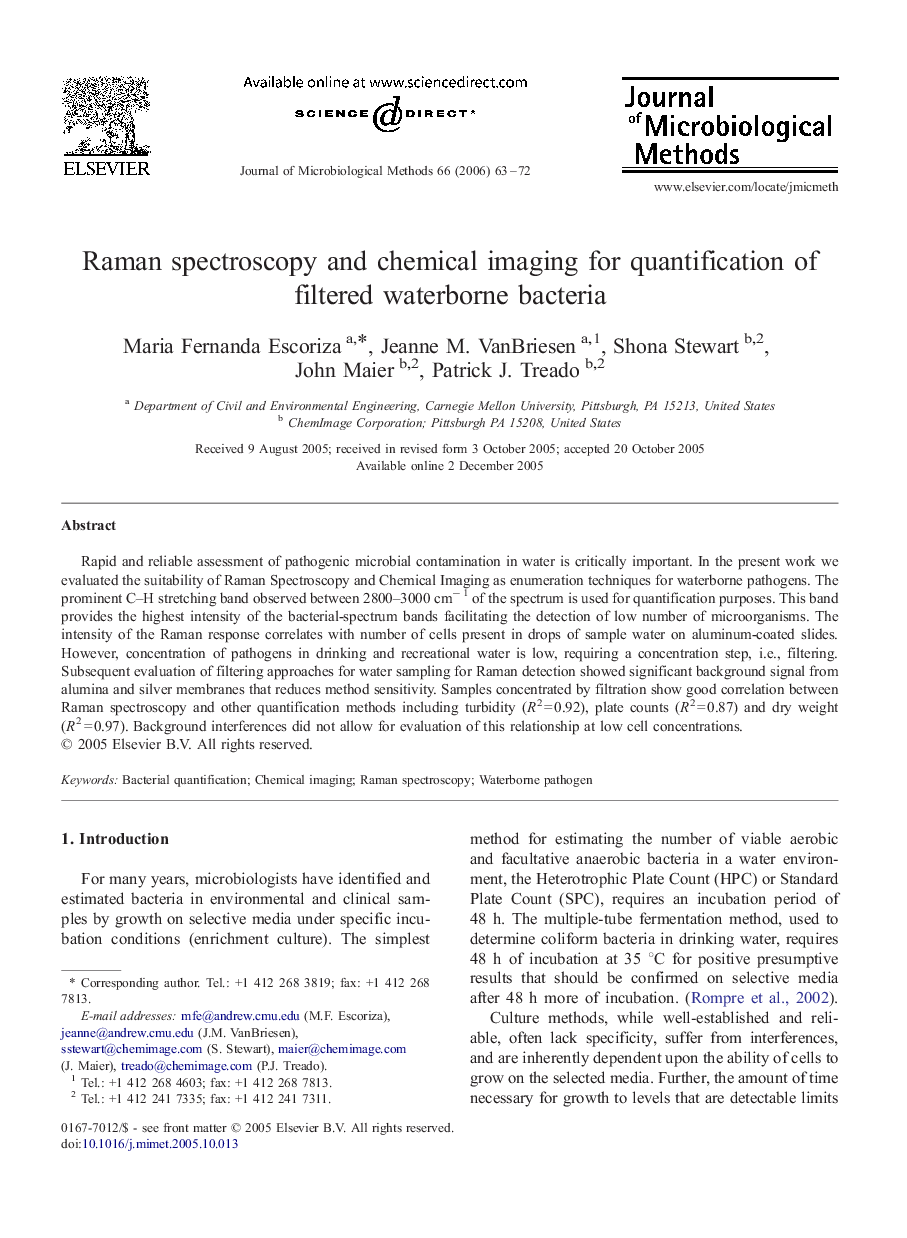| کد مقاله | کد نشریه | سال انتشار | مقاله انگلیسی | نسخه تمام متن |
|---|---|---|---|---|
| 2092077 | 1081765 | 2006 | 10 صفحه PDF | دانلود رایگان |

Rapid and reliable assessment of pathogenic microbial contamination in water is critically important. In the present work we evaluated the suitability of Raman Spectroscopy and Chemical Imaging as enumeration techniques for waterborne pathogens. The prominent C–H stretching band observed between 2800–3000 cm− 1 of the spectrum is used for quantification purposes. This band provides the highest intensity of the bacterial-spectrum bands facilitating the detection of low number of microorganisms. The intensity of the Raman response correlates with number of cells present in drops of sample water on aluminum-coated slides. However, concentration of pathogens in drinking and recreational water is low, requiring a concentration step, i.e., filtering. Subsequent evaluation of filtering approaches for water sampling for Raman detection showed significant background signal from alumina and silver membranes that reduces method sensitivity. Samples concentrated by filtration show good correlation between Raman spectroscopy and other quantification methods including turbidity (R2 = 0.92), plate counts (R2 = 0.87) and dry weight (R2 = 0.97). Background interferences did not allow for evaluation of this relationship at low cell concentrations.
Journal: Journal of Microbiological Methods - Volume 66, Issue 1, July 2006, Pages 63–72